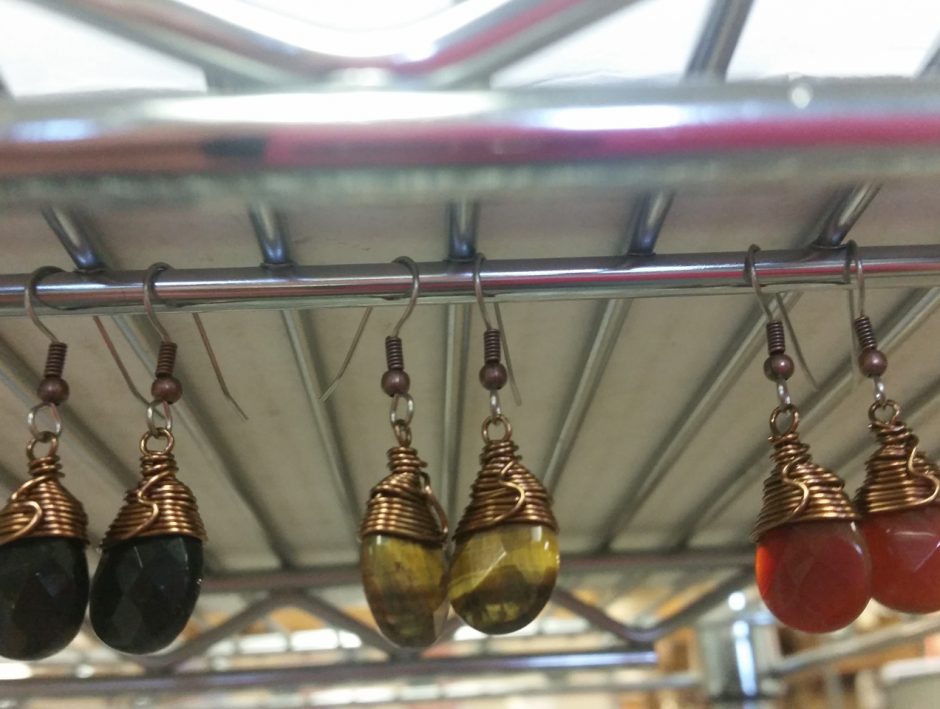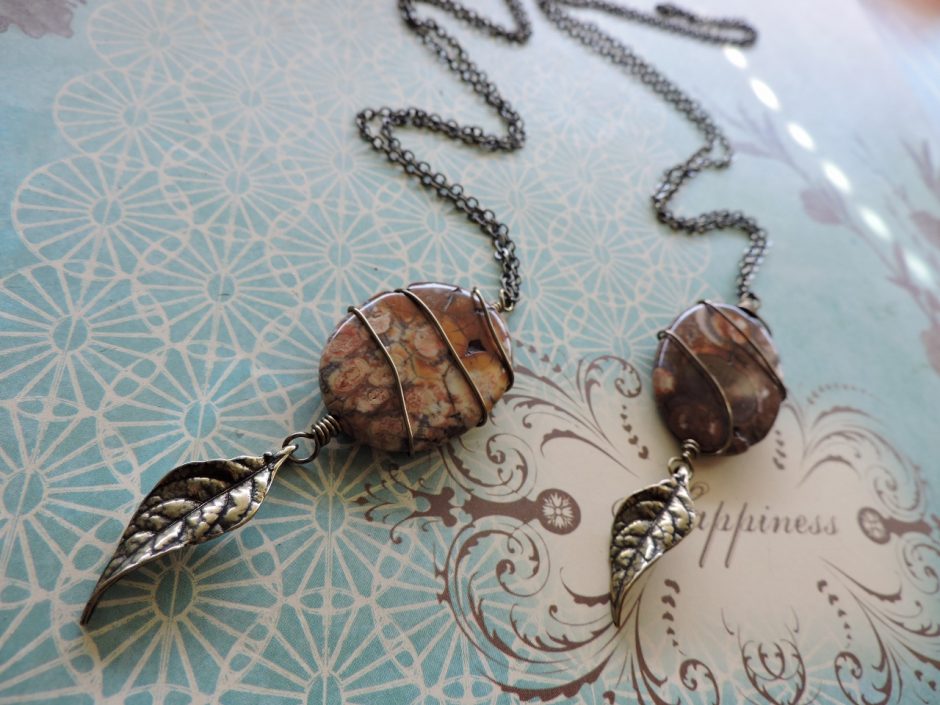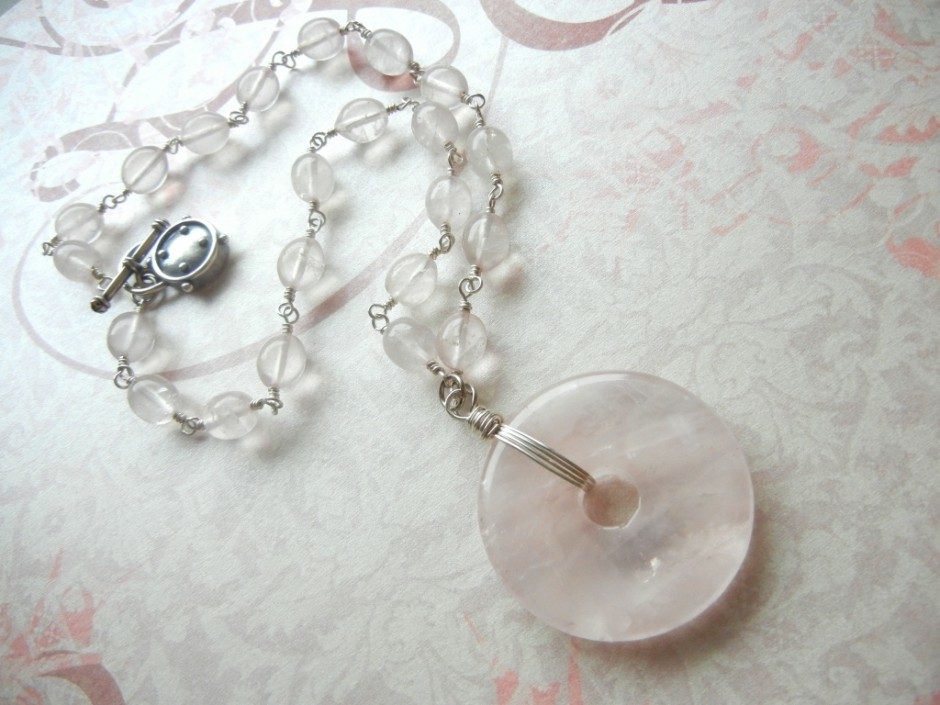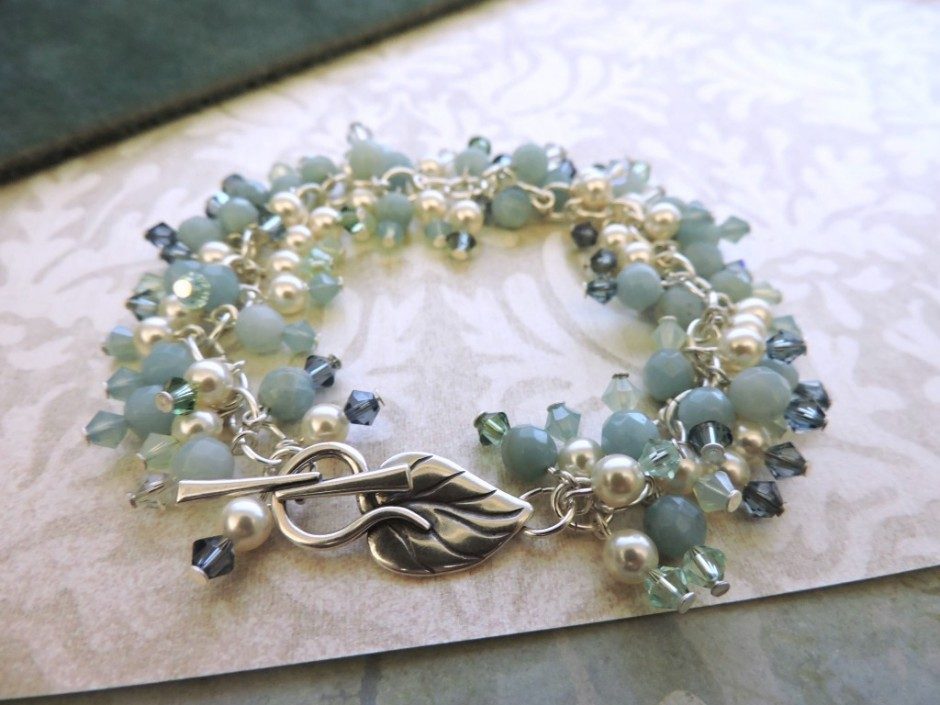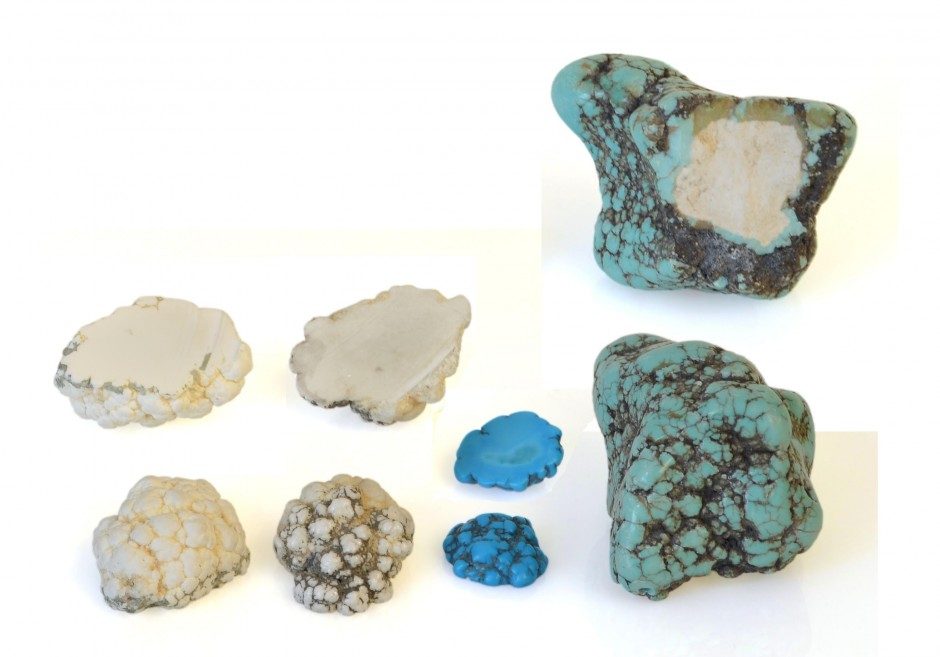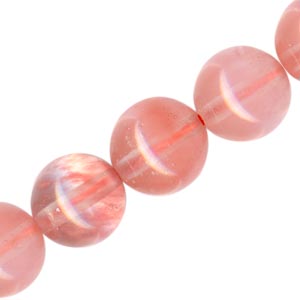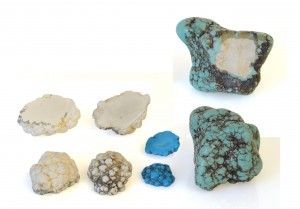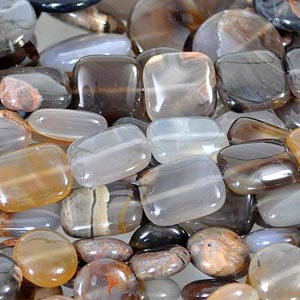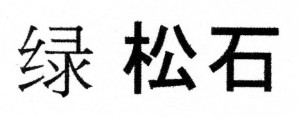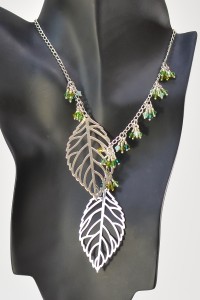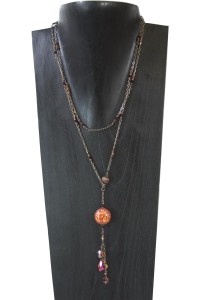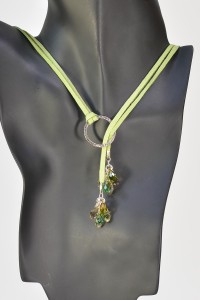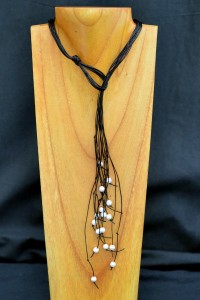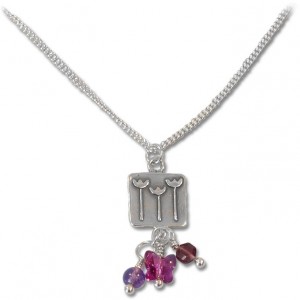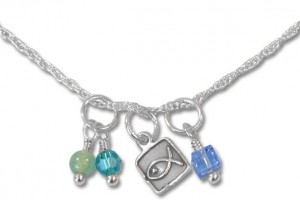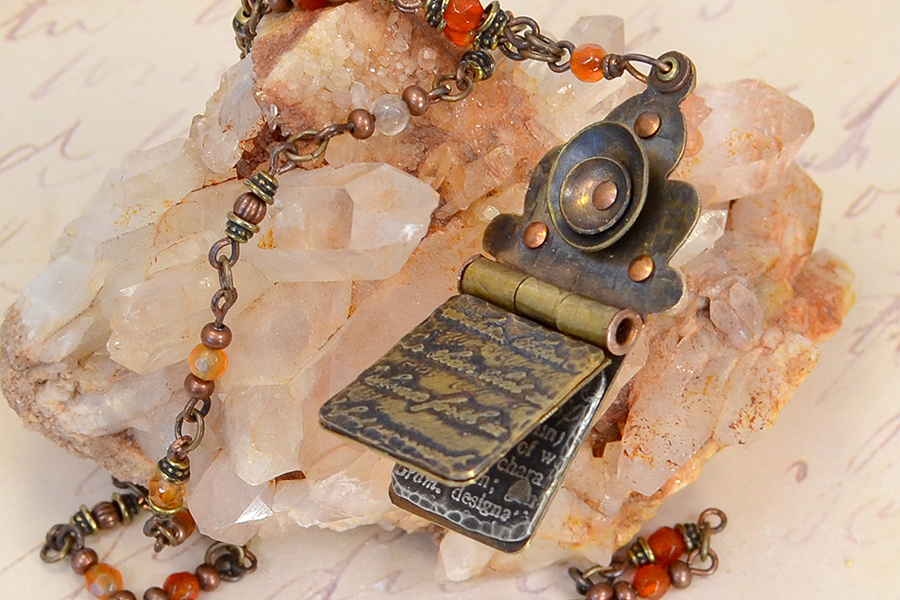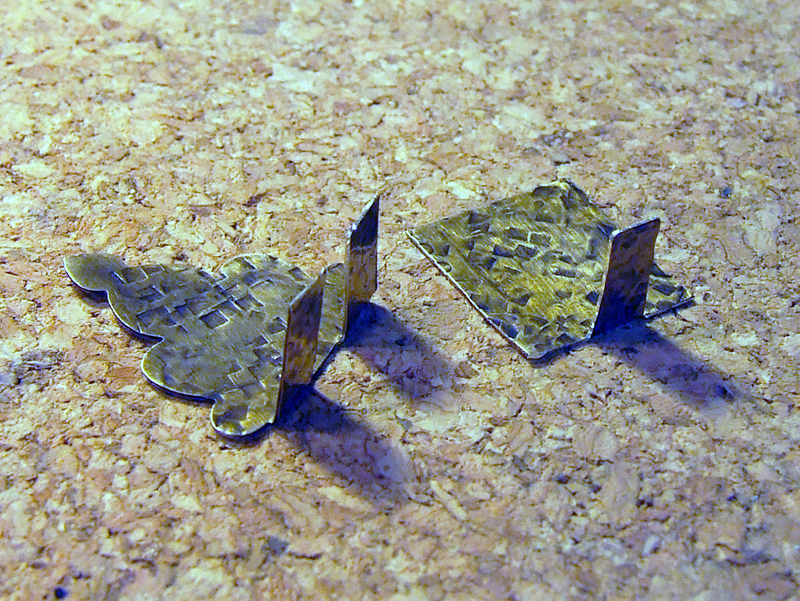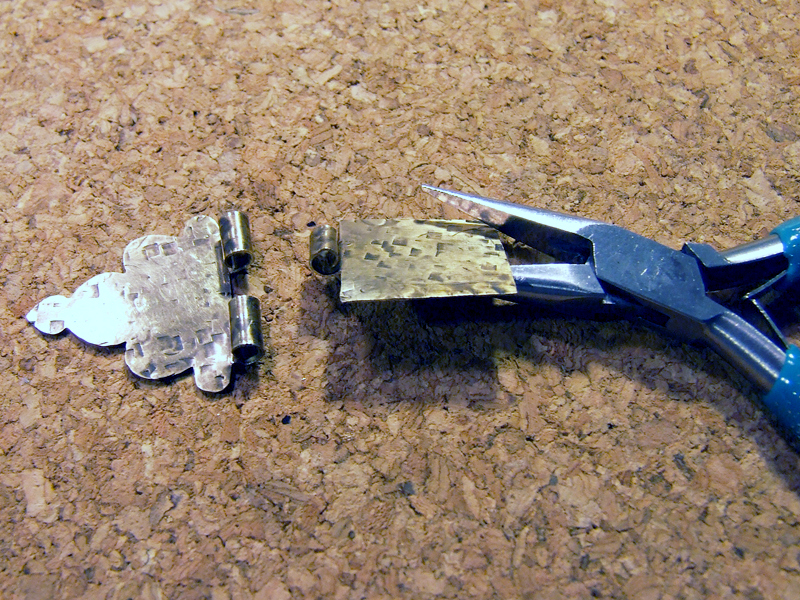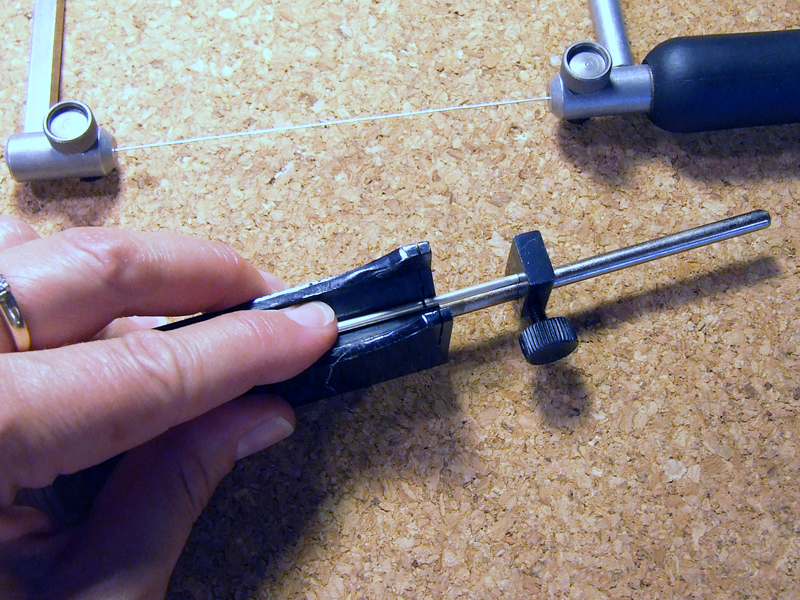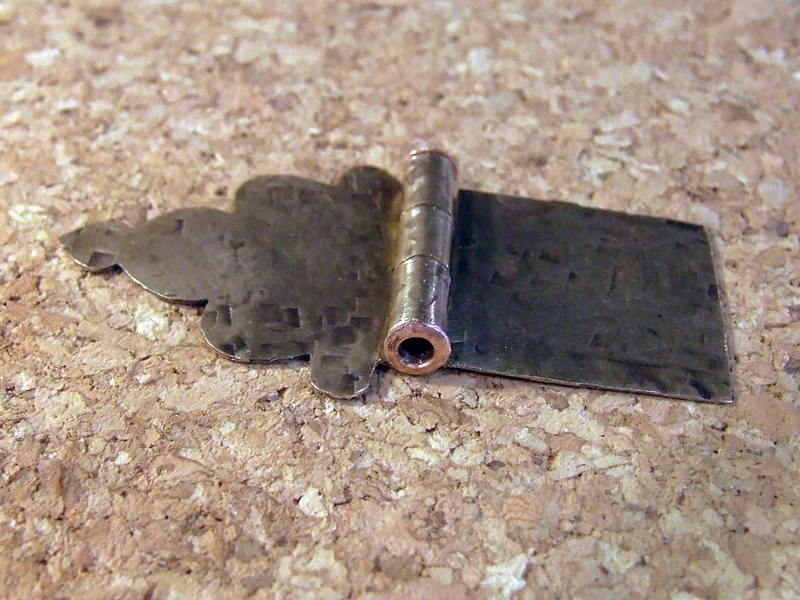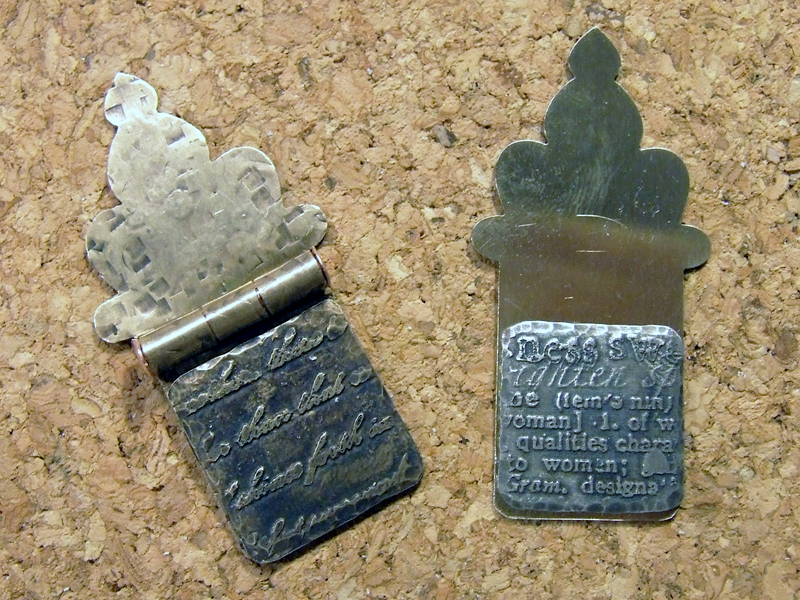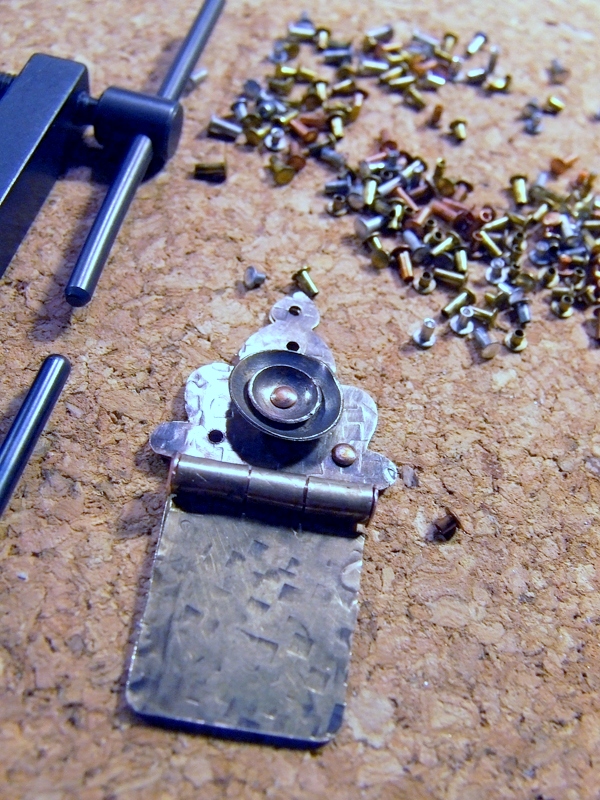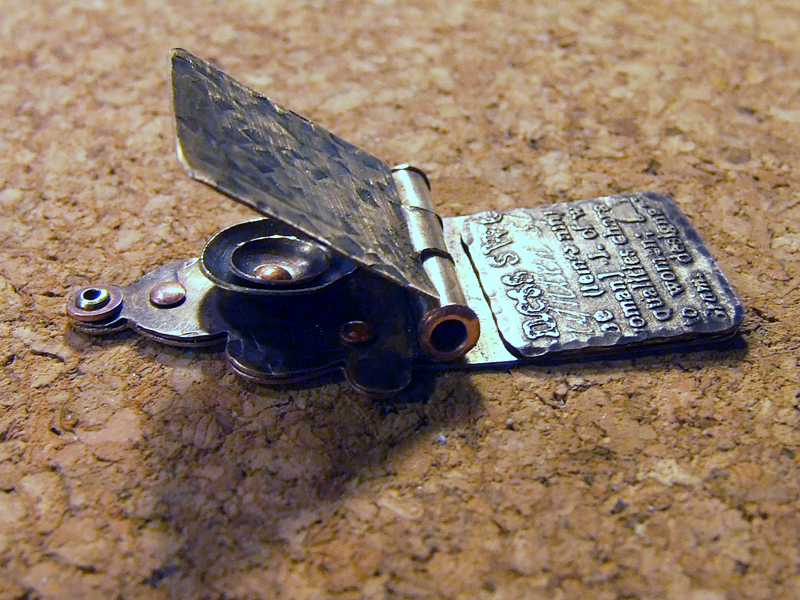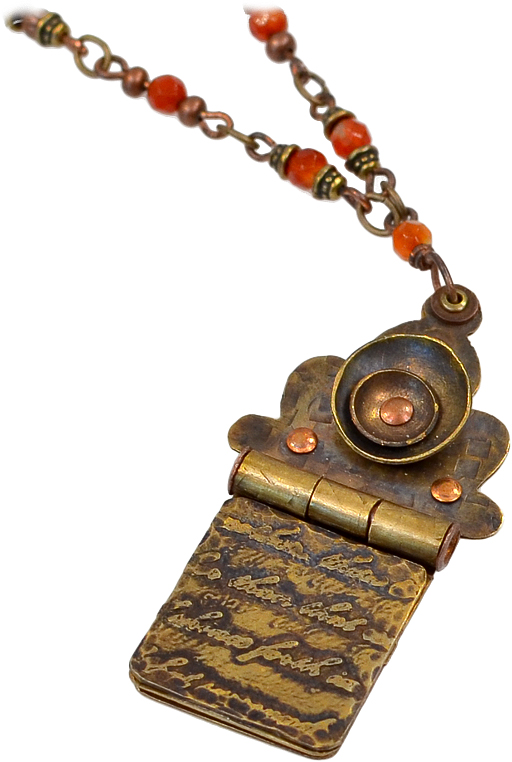Want a simple and versatile earring design that you can replicate over and over again? This wire-wrapped briolette earring design can be used for any tip-drilled teardrop beads or briolettes. That’s what makes these some of my favorite earrings to make! The result is simple yet can look dramatically different depending on what colors and gemstone beads or crystal pendants you choose.
Continue Reading…
Easy DIY Long Bohemian Gemstone Necklace
July 29, 2015Long pendant necklaces have been very in style the last couple of years. Whenever I go into a trendy boutique, the displays always have several of these necklaces layered over bohemian chic clothing. I decided I had better make one myself! You can use any large gemstone, your choice of chain and charm. I like the antique brass finish the best. This project is really quick and easy, but turns out very elegant! —
Planet Earth Earrings
March 24, 2015Earth Day is just around the corner! And the timing couldn’t be better! We just got in the new TierraCast Earth Buttons and I thought some planet Earth earrings would be perfect! Check out below how easy these earrings are to make! —
DIY Rose Quartz Healing Necklace
February 6, 2015Rose quartz is a such a beautiful stone, pale pink and translucent. I have recently had customers for my personal business requesting more rose quartz jewelry due to the healing powers of this stone. When I looked into it, I discovered that rose quartz is a stone that promotes unconditional love and healing from emotional trauma (such as heartbreak). How perfect for Valentine’s Day! —
DIY: Funky Bohemian Turquoise Spike Jewelry Set
February 3, 2015I love the look of turquoise! I always have. It is very bohemian and hippie chic. Recently, while watching The Bachelor (we all have our guilty pleasures) I noticed that one of the girls was wearing jewelry containing the very turquoise magnesite spikes that we carry at Rings & Things! So I decided to make my own copycat version of her designer jewelry. It was super easy! —
Cluster Shades of the Sea Mermaid Bracelet
January 13, 2015Continue Reading…
How can you tell if gemstone beads are genuine or imitation?
April 28, 2014We recently received this email asking whether gemstone beads (especially from China) are fake, and it’s a great opportunity to address not only her question, but related questions that we frequently get over the phone and in our Showroom.
Hello,
I have recently come across some articles that say gemstones exported from China are fakes or contaminated. As a large distributor, do you test the products or suppliers before you re sell the items? If so, what are your findings? In general, do you think there is much truth to the speculation about gemstones and semi precious stones exported from China being fake or contaminated? Thank you for your help. –Lauren
Russ’ reply:
This is a great question. Thanks for giving me the opportunity to describe how we deal with misinformation and misleading names in the bead industry. We’ve struggled with this for years ever since I learned from a rockhound that most black onyx started out as chalcedony treated with sugar water and then heated.
The simple answer is yes, there is a lot of misrepresentation and misleading information about beads from China and elsewhere.
No, it’s not just beads from China that are enhanced or misrepresented. It’s not that simple. Enhancing or misrepresenting gemstones is not limited to Chinese suppliers.
Most buyers do not realize that gem enhancement is ancient, easily 2500 years old. Black onyx enhancement is reported in the notebooks of Pliny the Elder.
Some examples of treated or commonly misrepresented stones:

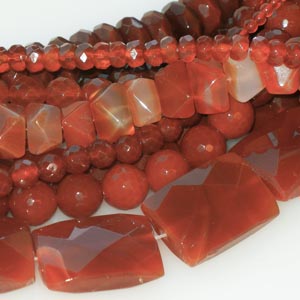
Most blue sapphires are heat-treated yellow sapphires, often by the miners.
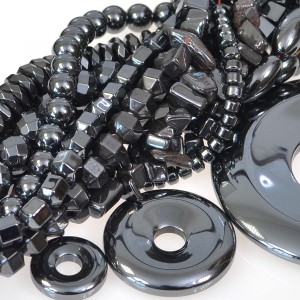
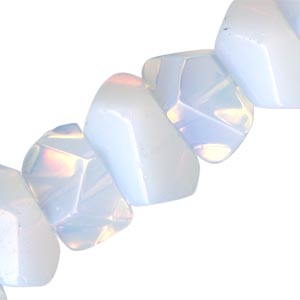
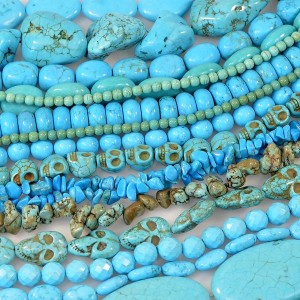
Most beads sold as “Chalk turquoise”, and too many beads on the market as “turquoise” or “stabilized turquoise” are really dyed magnesite.
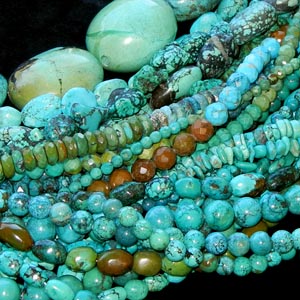
Although we are not gemologists at Rings & Things, and we don’t have fancy lab facilities or an X Ray Def machine in-house, we do use tried-and-true simple tests when we’re unsure about a batch of beads. When we receive unusually bright beads, or lovely even-colored beads strung on cord the exact same color, we put them in a bin of water for a few hours (or even weeks) to test if they are colorfast. We break occasional beads to see what color and/or texture is inside. We send out samples from metal suppliers for destructive assay to verify silver content and lack of lead or cadmium content. There is no equivalent testing facility for most gemstones sold as beads. The GIA (Gemological Institute of America) does a great job testing precious stones but they are not much help for inexpensive stone beads.
We ask a lot of questions from our suppliers. We research on the internet and ask others in the gem and bead industry. We track new stones names on the gem forums (particularly mindat.org.)
We make mistakes, but when we discover we’ve used the wrong description or name we quickly change to the correct one and admit our error.
Editor’s note: One example is Thunder Agate:
Our first batch of Thunder Agate was sold to us as Lake Superior Agate (the official gemstone of the state of Minnesota), but a customer in Minnesota told us “…it would be very hard to get any large Lake Superiors and the colors are not those of our area”. So we looked closer, and questioned the vendor, who said the rough is from the Thunder Bay area of Ontario (which is close, but not quite the same as the official stone). So we immediately re-tagged our beads, and sent a corrected email.
Part of the problem with beads from China is language and culture. Chinese names are often descriptive rather than technically mineralogical. The characters for turquoise in Chinese mean “Green tree stone.” Anything that looks like “Green tree stone” might be called turquoise.
Jade is very important in China but the word “Yu” for jade is used for many different stones that are used the way jade is used in China. Here is a quote that Barbara in Beadcollector.net wrote during her visit to Beijing Geological Museum:
‘Jade’ in China describes all polycrystalline and cryptocrystalline mineral aggregates and a few non-crystalline materials that are suitable for carving and making into jewellery. The characteristics are beauty, colour, moderate hardness, tough and fine texture, and as well as nephrite and jadeite includes opal, serpentine, quartz, turquoise, lapis lazuli, malachite, dushun yu, marble, natural glass, rhodocrosite, sodalite, and rhodonite.
You see the problem this causes? In the West, only jadeite and nephrite are really jade.
I agree that many stone beads coming from China are sold with inaccurate names or descriptions.
- Some misrepresentation is intentional because the fake will sell better if the buyer thinks is is a more expensive stone.
- Some is misunderstanding the level of mineralogical detail or accuracy we in the West want.
- Some is that the importer does not ask enough questions of the cutter or Chinese exporter and passes on inaccurate names.
- Some is mislabeling by the Chinese exporter because they do not understand the English words.
- Some is simply lack of knowledge about stones and not caring to find out what they are selling.
For example, a Chinese seller understands that dyed magnesite is not real turquoise and that “stabilized” means the stone is enhanced. This leads to a dealer with 2 piles of blue beads, one labeled “Stabilized Turquoise” and the other called “Natural Turquoise.” The stabilized pile was really blue dyed magnesite. The “natural” was real turquoise hardened with clear resin. Natural to us means that nothing has been done to enhance the stone. “Natural” to that dealer meant that it started out as real turquoise.
On Etsy and on Chinese sites I see blue dyed magnesite sold as dyed howlite. They tried to be accurate (and knew it wasn’t turquoise) but are using the wrong stone name.
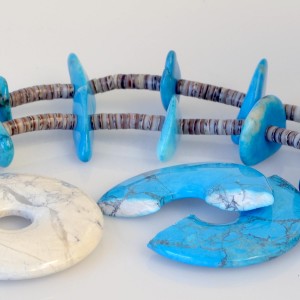
A lot of stones can be dyed or enhanced with stronger colors. Lately we’ve seen many common stones with intense colors added to them. Stones this intense should almost always be labeled as “dyed” or “enhanced”.
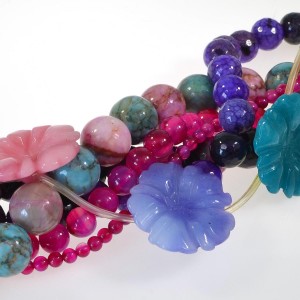
We try to accurately label enhanced and dyed stones. From our old printed catalog:
Some stones are simply dyed, which is not always colorfast. One way to avoid getting caught with stones that “run” when they are worn, is to look at the cord or plastic line the beads are strung on. If the cord is stained with blotches the same color as the beads, then beware. We avoid stones that look like they will “run”, so our altered beads are generally enhanced with various trade secrets such as the centuries-old methods for coloring black onyx and carnelian, or dyes that only come off when exposed to acetone or acid.
We label gemstone beads in our catalog and online store with the following symbols and terms:
+ enhanced,
* manmade, and
~ descriptive name.
There isn’t room on the tags for explanatory paragraphs, so on each stones Category page in our web store, we have more information about the stones. Scroll down below the Carnelian beads on this page for an example. To see all of this information in one place, you might also be interested in our Gemstone Beads Index (sorry, no longer in print – but almost all of the information from it, is in the headers and footers of our Gemstone Beads Categories in our online store, and we’re working on getting the remaining information live again); it has a great deal of information about each stone (where it is mined, and how to care for it, as well as common enhancements or other important information).+ Enhancements can include:
Dye/stain/acid to change the stone’s color or make natural color more pronounced or uniform.
Heat treatment to produce an effect such as crackling or color change.
Irradiation (harmless to the wearer) to create a new color.
Plastic/resin/wax to harden the exterior, making it more durable.~ Descriptive Name
The names for these beads are meant to describe what they look like, rather than identify what they are made of. These are generally accepted, common terms including “new jade” (a serpentine) and “African turquoise” (a jasper). They are genuine, natural gemstones that resemble more-expensive stones, and make excellent substitutes.
* Manmade
You’ll find that many online sellers, and nearly all of the “big box” stores don’t clearly label manmade gemstones. Goldstone, for example, has been made in Venice since the 17th century, but few end consumers are made aware this is a fancy glass rather than a gemstone grown by nature.
Stones carved from “block” should be called manmade, but many sellers call them “stabilized” or “reconstituted”, or don’t question them at all. Genuine malachite has become rare, very expensive, and nearly impossible to find as beads. Our manmade malachite is a nice imitation carved from block.
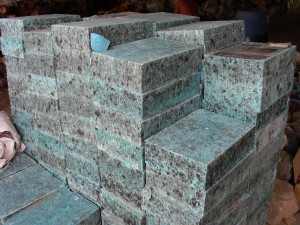
I’ve collected many pictures of fake and misrepresented turquoise on my Pinterest page to help educate buyers: http://www.pinterest.com/russnobbs/turquoise-imitations/
What can you do to avoid buying misnamed and misrepresented beads? Buy from dealers you trust and who can tell you about the material. Ask questions when you shop. Ask detailed questions. If you are uncomfortable with the answers or the prices, don’t buy. Do some of your own research by checking the information in our gemstone category pages, Gemstone Index, or other sites and lapidary books.
I hope this answered most of your questions. I appreciate your business and your questions.
—————————————-
Russ Nobbs, Founder & Director
http://www.rings-things.com – Spokane, WA – USA
Shop gemstone beads now:
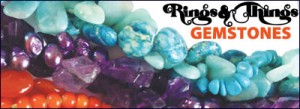
Additional questions can be posted at our Facebook page, or using the “Add a response” link below.
Links updated 2016-01-08. ~Polly Nobbs-LaRue. Russ, we miss you.
Edited December 2021to update links.
Lariat Round Up
January 21, 2014I have been more and more drawn to Lariat style necklaces lately, and seeing lots of them pinned on pinterest. This inspired me to create several lariat necklace tutorials for the Rings & Things jewelry design gallery and to look to our other designer’s past contributions to this jewelry style.
What is a lariat necklace? It is an open-ended necklace with no clasp. It is fastened by threading one end of the necklace through the other. Lariat necklaces frequently have beads or tassels at the end, and are typically worn with the ends in front.
The assymetrical Foliage necklace design is similar. Clusters of SWAROVSKI ELEMENTS xilion crystal bicones are spaced along the curb chain, and again the chain goes through one of the charms to lock the second charm in place, however, the spacing of the bead clusters limits the adjustment to the final length that can be done by the wearer.
The Tour de Belgium long lariat design is designed to be worn doubled. A large fluted bead locks the charm dangles in place. Some adjustment to the final length can be made by varying the length of the doubled section of drawn flattened cable chain.
The Giddyup lariat is made on suede lace with SWAROVSKI ELEMENTS. The ring is tied just off center of the length of leather, and the crystal briolette dangles slip through the ring. The metal components of this true lariat style necklace are plated, to economize.
The Ladylike lariat design is also made with suede lace. This luxe necklace pairs sterling findings with freshwater pearls and sparkly glass. While the components are minimal, the design has impact.
The Corralled Pearls necklace has no findings, and no metal. Thin leather cord, usually not strong enough for stringing, can transform into a bold design when many strands are gathered together. The use of a battery operated bead reamer allows the hole on these freshwater pearls to be made larger for stringing. Simple overhand knots create the loop (clasp) and also hold the pearls in place.
I hope you like this roundup of lariat designs. All of the components to make each of these designs are available right here at Rings & Things. Remember to check our design gallery for a variety of jewelry styles and jewelry design inspiration!
~ Rita
Create a Custom Personalized Necklace
December 6, 2013Personalized jewelry is very popular, and quite simple to create! A four-piece jewelry making tool set and basic assembly techniques are all you need to create custom necklaces.
It is easy to personalize jewelry using birthstone-color gemstones and Swarovski crystal, along with a sterling silver charm or two. Rings & Things sells a huge selection of lightweight budget-friendly sterling charms and necklace chains.
Chains are easily adorned with add-a-dangle, or add-a-gemstone charms. To create these assorted dangles, you just need a selection of small beads from your stash and some sterling ball-end head pins.
These colorful dangles allow you to add several birthstones to a custom piece, or accessorize it according the whimsy of the wearer. A mixture of natural stones, freshwater pearls and Swarovski crystals is very popular. Making oversized loops on the dangles makes it easy to slide them onto nearly any chain without adding a jump ring.
If you sell custom necklaces, consider displaying the basics in a fun display (along with a few completed samples):
- A tray of sterling silver charms
- An assortment of pre-made add-a-gemstone dangles
- A variety of pre-made add-a-birthstone crystal dangles
- A few styles of sterling silver necklace chains.
This jewelry also makes great gifts and mementos for friends, family and other loved ones. Have fun making these darling necklaces!
Create a Hinged Metal Memory Journal
July 18, 2013Use a hinge to turn shrine-shaped metal blanks into a journal!
Slide tubing down the channel and finesse hinges as needed. Rivet tubing into place to finish the hinge. Open and close hinge to ensure a proper fit.
Carefully clean and polish the pendant before attaching the necklace chain.
Handmade jewelry looks great on a custom beaded necklace, on leather cording, silk ribbon or chain. I created a necklace by making individual links using the one-step looping plier, eye pins, metal beads and natural agates. The links were connected using jump rings.

